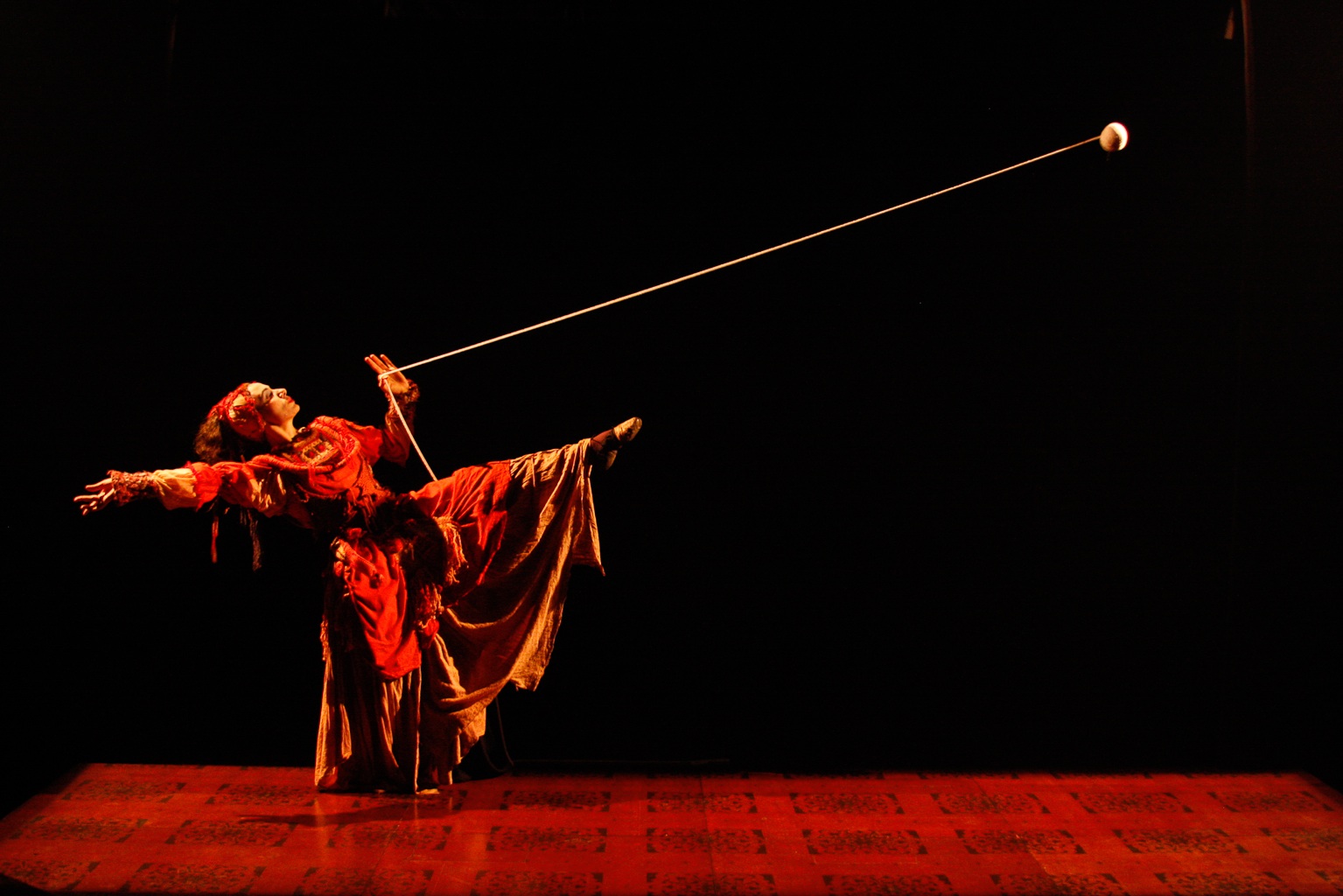A lone figure on stage – a woman dressed in layers of rich rusty orange, old gold, and cream fabrics, a whirl of silks and cottons of many different textures. A pair of scissors drops down to meet her; a ball of twine unwinds and suspends itself in the space. We hear the rhythmic sound of a loom, and a fairy-tale chorus singing a lyrical song. And so we are off on the journey…
The Weaver is a simple and beautifully executed fantasy, the whimsical story of a woman at work who daydreams – or perhaps conjures up what she really, really wants for herself. There’s a moral here: be careful what you wish for; that handsome prince you’ve willed into your life might turn out to be someone other than the dream lover. Elements of well-known folk tales creep into the narrative – Sleeping Beauty’s spindle, Cinderella’s Prince Charming, the Gothic castles of Grimm’s Tales, the magical messenger birds of countless stories. The layering of associations adds to the rich tapestry of the piece.
The tale is told by the lone performer who is supported by two puppeteers, black-veiled female figures who are mostly invisible, but sometimes placed in a tableau, hinting at a half-way house shadow world just out of our reach. Talking of shadow: the piece uses both film projections and shadow theatre as a beautiful additional scenographic element. The weaver’s loom seen in shadow creates a beautiful silhouette, her hands appearing ten times larger than life on the screen. A film-still close-up of her face elevates her from mundane worker to fantasy princess, and patterns of woven cloth create a gorgeous screen backdrop.
This is a word-free piece, the visual dramaturgy working in tandem with a recorded score that integrates children’s song, accordion tunes, the sampled sounds of machinery, wistful waltzes, and a sensuous tango (as the weaver dances with her conjured-up gentleman friend).
The fantasy lover appears first as just a cloak, later acquiring a feathered hat, a puppet head, and finally a full body. The manipulation, particularly in the dance-and-romance scenes, reminds me of the work of Belgian company Mossoux Bonte – costume, puppetry and physical action merging into one. Human figures and puppets are interchanged in scenes that combine manipulation with sleight-of-hand illusion, offering the question: who is dreaming whom?
The Weaver is by Caixa do Elefante, a Brazilian company renowned for two decades of theatre excellence. They are presented at the Edinburgh Fringe by Cena Brasil, a Rio-based organisation/festival specialising in physical and visual theatre. Cena’s Brazilian Theatre Season at the Fringe features work by four outstanding companies.
A truly wondrous hour of magical theatre that is suitable for audiences of all ages. Be prepared to be entranced!

